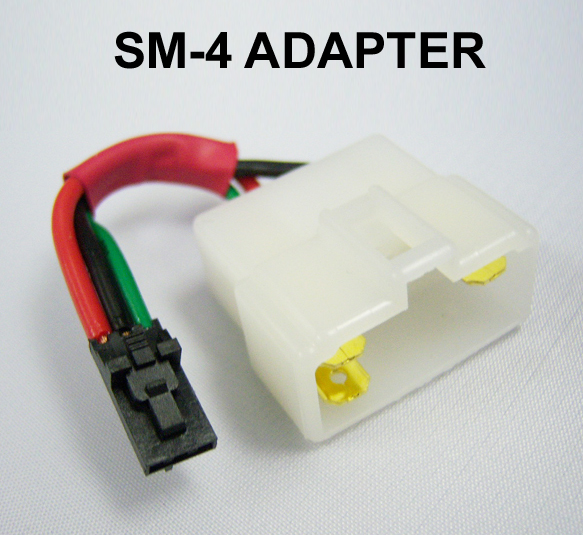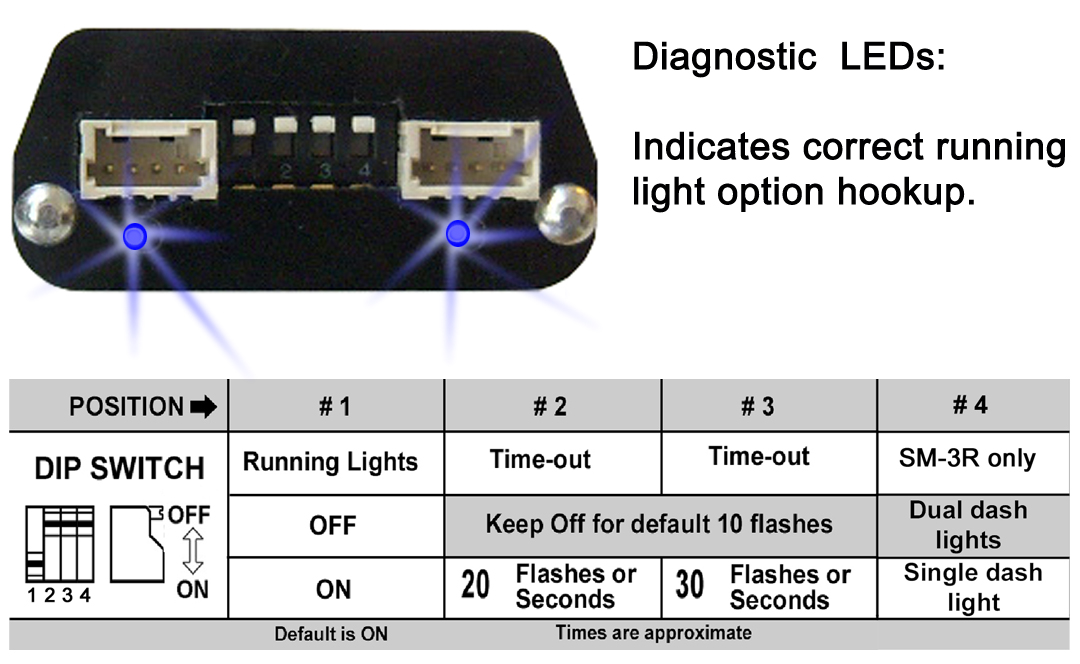You are using an out of date browser. It may not display this or other websites correctly.
You should upgrade or use an alternative browser.
You should upgrade or use an alternative browser.
Vboost Question
- Thread starter Okie2ee
- Start date

Help Support VMAX Forum:
This site may earn a commission from merchant affiliate
links, including eBay, Amazon, and others.
Based on your apparent level of experience with microcontrollers, I would suggest going to YouTube and searching for Arduino Nano or Uno projects and learning tutorials...........that's where I got most of my information................plus you need to be able to follow the actual experiments with equipment..............I've been doing this for awhile and have accumulated some support equipment......My turn signals don't cancel because there is no speedometer output to the turn signal relay. I was thinking of using a Nano to provide a similar input signal. Do you know what is being "sent" to the signal relay? Perhaps a +12V pulse every 1/10 mile. Or some other output. I would be happy with the relay just turning off after 10 secs..
I am new to the Arduino and this seems like good place to have a real world purpose to learn it.
Thanks in advance
Ryce

I'm sure the Nano could handle the task but I'm not familiar with the turn signal controller...........mine has never worked and I've always wondered why Yamaha didn't put a turn signal canceler on the bike..........never to old to learn something new and so obvious...............
Yes, I am aware of the two wire type devices............thanks. I have already tried out the RC servo, a 20 kg unit, and it has more than enough torque to run the throttle plates..............and yes I'm considering methods to make sure that I don't over torque the throttle plate shaft and butterflies..............thanks for the input
1. Nixies may be a little bit fragile for this purpose but are you aware you can buy multi-digit 7 segment LED displays that are driven by 2 wires (data/clock) - that would save quite a few additional components.
2. if you are planning a stepper motor, then be aware the maximum torque occurs at low rpm - if you are not careful, you may wind the shaft too much so that something gets damaged or the butterfly jams shut - ofcourse that depends on the power of the motor. Personally I'd use the original motor and read the potentiometer to get feedback on the position.
3. definitely keep us informed (I started to look into this but project was abandoned when I fixed my VBoost)
If you are happy with that, a simple solution would be a small oscillator circuit to trigger a relay to simulate the bike moving. Depending on the frequency selected, the indicators will stop flashing after 10 seconds or some other fixed length of time.I would be happy with the relay just turning off after 10 secs.
desert_max
Well-Known Member
Alternatively, you could just flip the switch...
Or if you want an off the shelf solution.

$16.19
$17.99
MELASA Fleece Lined Winter Cycling Beanie with Holes for Glasses - For Men, Women
HNXCHUANG
Mr. Midnight has posted an add-on which has a number of interesting functions.
Selectable Time-outs:
signalMinder uses a computer chip to cancel the turn signals. There are three selectable timeouts; 10, 20, 30 seconds. Built-in DIP switches allow the setting you prefer.
Running Light Option:
By attaching two quick-connects included to right and left turn wires of the bike, you can convert ALL FOUR turn signals to running lights and establish a dual-channel system on your bike. Using them as running lights increases visibility. However by using the DIP Switch #1, you can turn them off and still maintain the dual-channel system.
With the dual-channel system, when you activate the RIGHT turn signal three times in succession, you get 4-way hazard flash function. If you activate LEFT turn signal three times in succession, you get Escort mode flash function.
Built-in RUN-TURN-BRAKE functions:

No need to buy other turn signal conversion product. You get RUN-TURN-BRAKE features and automatic signal cancelling!
If you hook-up the 12 volt supply from the brakes to the signalMinder brake input:
BRAKE FLASH OPTION will flash the turn signal lamps every time you apply brakes. A short 2 second flash pattern begins with quick flashes and then slows down to solid on. This option can be programmed On or Off.
BRAKE OVERRIDE OPTION allows continued flashing for those times when you are waiting at the signals to make a turn and do not want the time-out to cancel the flashing. It suspends the time-out feature until the brakes are released.
MORE FEATURES

HANDLE BAR RETURN SPRINGS: If above options are hooked-up, these tiny return springs can be inserted in the handlebar switch to force it back to neutral automatically. You don't have use the Push-to-cancel of the handlebar switch.
Above options are not required to be installed, but utilizing them allows fully automatic turn signal cancellation. We highly recommend hooking them up.
 Please Note! NONE of the wires on the bike have to be cut. The kit includes Scotchlok brand of Insulation Displacement Connectors (IDC) to tap into existing wires. No special tools are required for installation. Follow the steps outlined in the Installation Manual included in the product package.
Please Note! NONE of the wires on the bike have to be cut. The kit includes Scotchlok brand of Insulation Displacement Connectors (IDC) to tap into existing wires. No special tools are required for installation. Follow the steps outlined in the Installation Manual included in the product package.
Selectable Time-outs:
signalMinder uses a computer chip to cancel the turn signals. There are three selectable timeouts; 10, 20, 30 seconds. Built-in DIP switches allow the setting you prefer.
Running Light Option:
By attaching two quick-connects included to right and left turn wires of the bike, you can convert ALL FOUR turn signals to running lights and establish a dual-channel system on your bike. Using them as running lights increases visibility. However by using the DIP Switch #1, you can turn them off and still maintain the dual-channel system.
With the dual-channel system, when you activate the RIGHT turn signal three times in succession, you get 4-way hazard flash function. If you activate LEFT turn signal three times in succession, you get Escort mode flash function.
Built-in RUN-TURN-BRAKE functions:

No need to buy other turn signal conversion product. You get RUN-TURN-BRAKE features and automatic signal cancelling!
If you hook-up the 12 volt supply from the brakes to the signalMinder brake input:
BRAKE FLASH OPTION will flash the turn signal lamps every time you apply brakes. A short 2 second flash pattern begins with quick flashes and then slows down to solid on. This option can be programmed On or Off.
BRAKE OVERRIDE OPTION allows continued flashing for those times when you are waiting at the signals to make a turn and do not want the time-out to cancel the flashing. It suspends the time-out feature until the brakes are released.
MORE FEATURES

HANDLE BAR RETURN SPRINGS: If above options are hooked-up, these tiny return springs can be inserted in the handlebar switch to force it back to neutral automatically. You don't have use the Push-to-cancel of the handlebar switch.
Above options are not required to be installed, but utilizing them allows fully automatic turn signal cancellation. We highly recommend hooking them up.

Do you get commission? 
I'm slightly struggling to see how this can be fitted without hacking the loom since there there are no left or right turn wires.
The handle bar switch routes power (on/off) to one pair of bulbs which isn't quite the same.
It also does not have the distance cancelling feature that the original relay has.
I don't want to be using the forum to peddle my own wares but if a direct replacement unit that has the exact same features as the original self cancelling relay but works with any type of bulb (filament and/or LED bulb), who would be interested and how much would you be willing to pay?
Below is the mk1 version for filament bulbs *, the mk2 will do LED. Note the unit uses the same 5 pin connector, is slightly smaller than the original and has the rubber band to fit to the frame so is unplug/plug in off you go (except the TURN lamp needs to sorted if using LEDS bulbs).
The first batch would be of 4 with at least 2 available for sale at a price that covers cost of components. If there is much interest I may look at getting boards professionally made but that is unlikely to happen as the time spent on assembly/test is not gonna make it worth my while.

* you're saying "ah but the original does filament bulbs???" Yes it does but the flash rate was too fast to be legal in UK - the replacement unit is independent of load and flash rate is 1.5 times a second.
I'm slightly struggling to see how this can be fitted without hacking the loom since there there are no left or right turn wires.
The handle bar switch routes power (on/off) to one pair of bulbs which isn't quite the same.
It also does not have the distance cancelling feature that the original relay has.
I don't want to be using the forum to peddle my own wares but if a direct replacement unit that has the exact same features as the original self cancelling relay but works with any type of bulb (filament and/or LED bulb), who would be interested and how much would you be willing to pay?
Below is the mk1 version for filament bulbs *, the mk2 will do LED. Note the unit uses the same 5 pin connector, is slightly smaller than the original and has the rubber band to fit to the frame so is unplug/plug in off you go (except the TURN lamp needs to sorted if using LEDS bulbs).
The first batch would be of 4 with at least 2 available for sale at a price that covers cost of components. If there is much interest I may look at getting boards professionally made but that is unlikely to happen as the time spent on assembly/test is not gonna make it worth my while.

* you're saying "ah but the original does filament bulbs???" Yes it does but the flash rate was too fast to be legal in UK - the replacement unit is independent of load and flash rate is 1.5 times a second.
one2dmax
Well-Known Member
The simple way to cancel is just to push the button inwards. Simple and doesn't cost anything.I have a GPS speedometer from Speedhut. I bought the bike from Sean Morley and did not know enough to ask him about the signals. So I am just thinking through the best way to get the cancel function to work. thanx
If you sell stuff here, just buy a subscription.
Another 8 pin device you should be familiar with is the Picaxe controller which is made in the UK. I've used these and they are easy to program and program in basic, IDE is free. The detailed info can be found here: PICAXE Chip Sizes - What is PICAXE - PICAXEDo you get commission?
I'm slightly struggling to see how this can be fitted without hacking the loom since there there are no left or right turn wires.
The handle bar switch routes power (on/off) to one pair of bulbs which isn't quite the same.
It also does not have the distance cancelling feature that the original relay has.
I don't want to be using the forum to peddle my own wares but if a direct replacement unit that has the exact same features as the original self cancelling relay but works with any type of bulb (filament and/or LED bulb), who would be interested and how much would you be willing to pay?
Below is the mk1 version for filament bulbs *, the mk2 will do LED. Note the unit uses the same 5 pin connector, is slightly smaller than the original and has the rubber band to fit to the frame so is unplug/plug in off you go (except the TURN lamp needs to sorted if using LEDS bulbs).
The first batch would be of 4 with at least 2 available for sale at a price that covers cost of components. If there is much interest I may look at getting boards professionally made but that is unlikely to happen as the time spent on assembly/test is not gonna make it worth my while.
View attachment 76559
* you're saying "ah but the original does filament bulbs???" Yes it does but the flash rate was too fast to be legal in UK - the replacement unit is independent of load and flash rate is 1.5 times a second.
Similar threads
- Replies
- 10
- Views
- 2K
- Replies
- 25
- Views
- 13K
- Replies
- 5
- Views
- 2K
























![Bovemanx Motorcycle Phone Mount Holder, [150mph Wind Anti-Shake][7.2inch Big Phone Friendly] Bike Phone Holder, Motorcycle Handlebar Cell Phone Clamp, Compatible with iPhone 16 Pro Max Smartphones](https://m.media-amazon.com/images/I/51F+1sontPL._SL500_.jpg)







